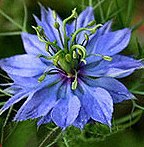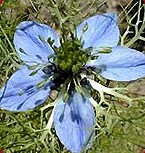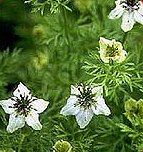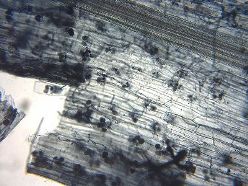Nigella sativa
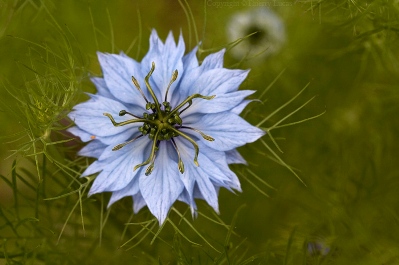 Nigella sativa is an
annual herbaceous (nonwoody) flowering plant
(angiosperm)
that originated in the Mediterranean region but has been
cultivated in other parts of the world such as Asia, Africa and
the Arabian Peninsula.
Nigella sativa is an
annual herbaceous (nonwoody) flowering plant
(angiosperm)
that originated in the Mediterranean region but has been
cultivated in other parts of the world such as Asia, Africa and
the Arabian Peninsula.
A little bit of history:
Black seed was originally discovered in the Egyptian
Pharaoh Tutankhamen's tomb (dated about 1325 BC ). This is pretty
significant because in the ancient Egyptian cultures only the highest of quality
items were placed in the tomb in order to protect the spirit in the afterlife.
Thus, Nigella sativa probably had an important role in the ancient
Egyptian practices.
Photo taken by Thierry Lucas
It has also been mentioned in the Old Testament (Isaiah
28:27) and by the prophet Mohammed (Peace be upon him (Pbuh)) approximately
fourteen hundred years ago! The prophet (Pbuh) said: "Use the Black Seed for
indeed, it is a cure for every diseases", Sahih Bukari 7:591 except death". Nigella sativa is famous for its healing powers and is widely
used as a medicinal herb (learn about its
medicinal uses).The Greeks and Romans
used Nigella sativa as a condiment and is still commonly used today as a
culinary herb.
Does N.sativa interact with other organisms?
Nigella sativa benefits from a mutualistic relationship with fungi. The fungi interact with the roots (endomycorrihazae) of the plant and sometimes within the actual plant cells. Nigella sativa benefits from gaining minerals from the fungi, especially Phosphorus, Nitrogen and Sulfur. And in turn the fungi receive glucose from the plant. The plant also offers protection for fungi against predators. Picture to the left shows an Arbuscular mycorrihza at the roots.
A little bit about its nutrition:
Like any other plant, Nigella sativa are autotrophs which mean they can acquire their food (glucose) via photosynthesis by utilizing energy from sunlight. They are able to undergo photosynthesis because of a special pigment they contain on their leaves called chlorophyll .
6CO 2
+ 6H 2 O (+ light energy)
----->
C 6 H 12 O 6
+ 6O 2
Where is N.sativa found?
Nigella sativa is found in a lot of places; from the East Mediterranean to Northeast India. It is commonly cultivated in Egypt, the Middle East (Saudi Arabia in particular), Turkey, Sri Lanka, Kenya, Sudan, Afghanistan Europe and many more places.
To check out another flower (or any other amazing organism!) please visit:
